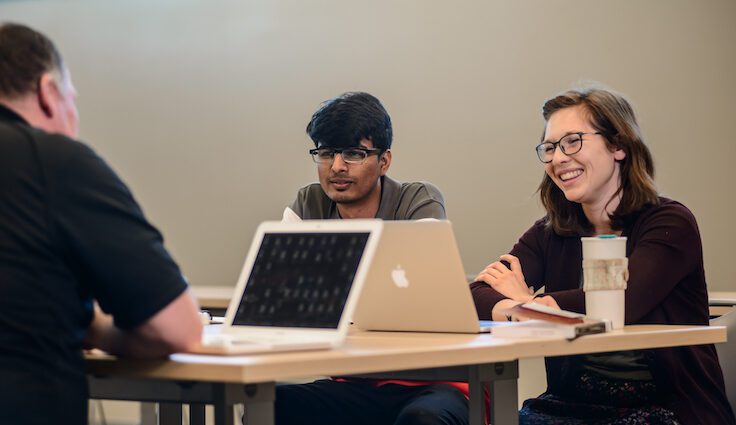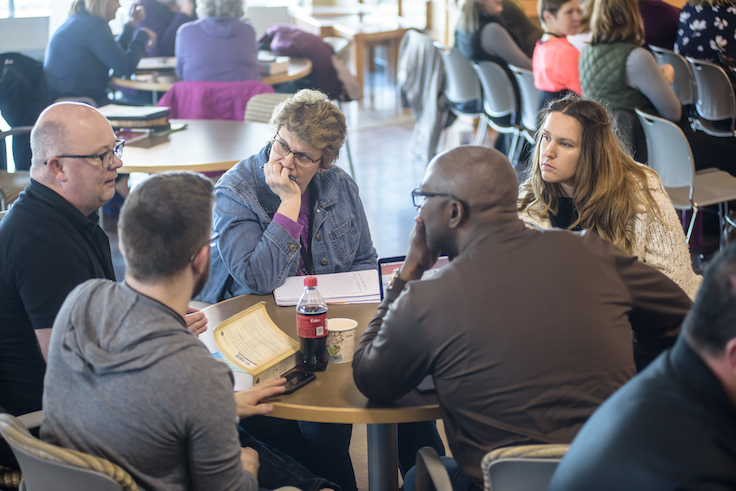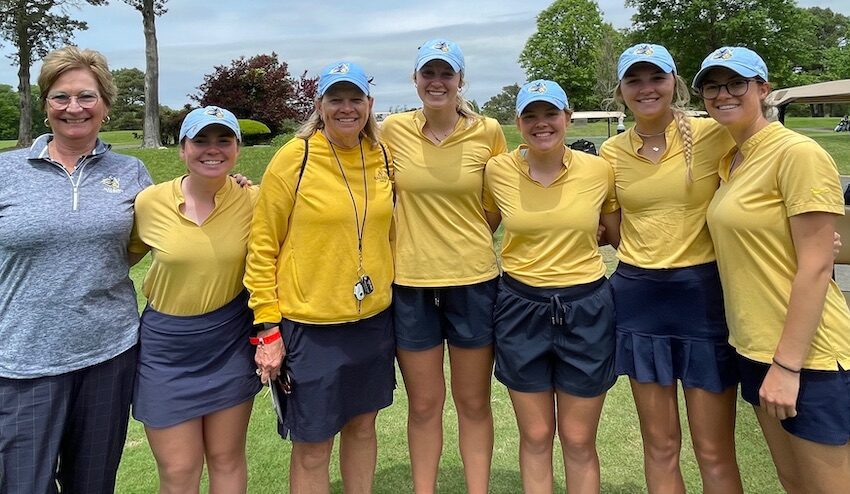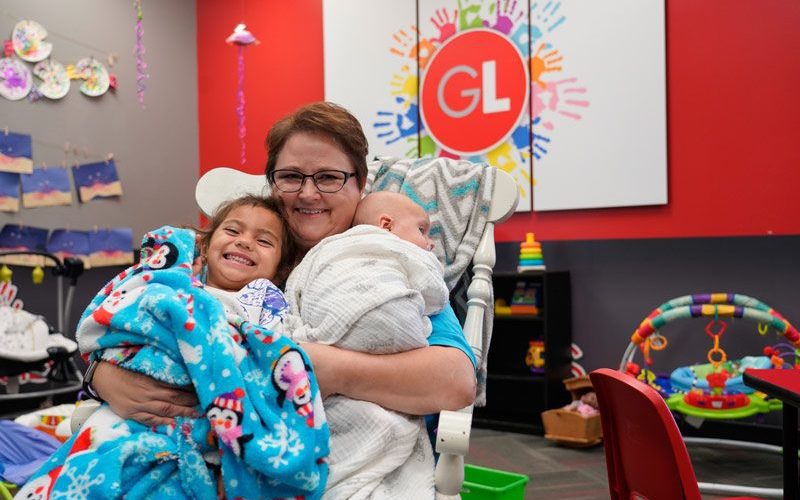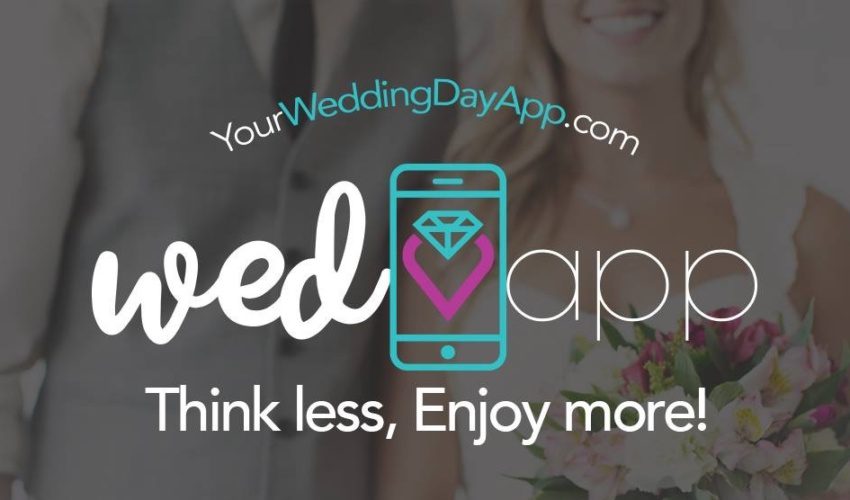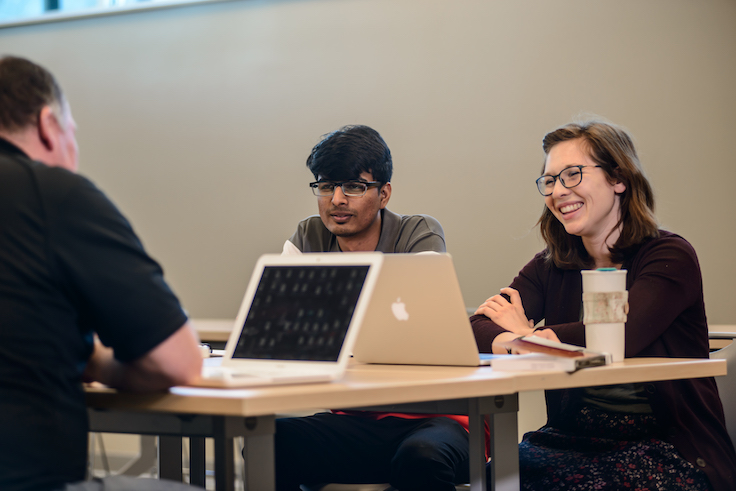What does accessibility in higher education really mean? These four things
Dec. 30, 2020
This paid piece is sponsored by Sioux Falls Seminary.
It would be far too simplistic to say that an online delivery model is what makes this approach to higher education more accessible than most.
Kairos, which grew out of Sioux Falls Seminary, has built a model that has made higher education more accessible in terms of location, level, learning style and time.
“In many cases, education in North America has become about selling degrees and credit hours, as if that’s the goal,” said Greg Henson, president of Sioux Falls Seminary and leader of the Kairos Project.
“The goal is impact; it’s whether or not students are making a difference in their communities. The degree is a byproduct. When we make the degree the goal, we miss the point of developing people. And when we think about accessibility, it’s not contingent upon the needs of the institution. It’s contingent upon the needs of the student.”
So, as a student, what does that look like? Read on.
Accessible from anywhere
The Kairos network is built so students can literally plug in from anywhere on the globe – and they do. Students have come from 28 countries, 42 U.S. states and six Canadian provinces.
“We had a gathering in August on Zoom that drew people from 10 countries, so it’s pretty fun when you have students and faculty interacting with each other and bringing such a global perspective,” Henson said. “You get accessibility without having to move, and you don’t miss out on exposure to the world.”
Students have come from Brazil, Togo and the Middle East, just to name a few.
Accessible at any level
Kairos offers everything from pre-degree certificate programs to bachelor’s, master’s and doctoral degrees.
“We have everything within a university structure, but what we really do is develop people to flourish in their vocation, whatever that vocation may be,” Henson said.
That could mean earning a degree, or it could mean tapping into the $300-per-month Kairos “subscription” model until students feel they have gotten what they needed from the program.
“That may be a degree, or it may be five conversations with someone on our team and in three or four months they feel they’re done,” Henson said.
One student in the Master of Arts in Christian Leadership program, for instance, was a leader in his church and ran a business while enrolled in Kairos.
“He was two years in and told us, almost embarrassed because he’s not a quitter, that he felt he was done. He felt like he’d gotten everything he wanted or needed out of this,” said Nate Helling, chief financial officer and vice president of operations.
“And we said, ‘Great, be done.’ A diploma isn’t going to change his world. It’s a freeing way to think about development. It’s not about getting through all the hoops to get the diploma. It’s how you get what you need for where you are. That may include a degree for some, but that doesn’t need to be the goal.”
Accessible no matter what your learning style
With traditional education, the formula is fairly set: Fit a list of courses into your schedule, and when you amass enough credit hours, earn a degree.
“But that becomes about controlling the path students take, and the result of that – and data shows this – is the outcome or impact is extremely variable,” Henson said. “By focusing on the specifics of a predefined path that students must follow, we lose the diversity and flexibility required to ensure consistent outcome and impact. Flexibility provides consistent results. Standardized pathways make consistent results difficult to attain.”
With Kairos, the goal is to reach a determined outcome and create impact.
“To do that, we have to give people a lot of flexibility to adjust the path they take,” Henson said. “There’s a consistent process and way of evaluating outcomes, but the model as a whole allows an almost infinite amount of flexibility in terms of the educational pathway.”
Using mentor teams and a structured development process, students are guided and supported through their personal learning journeys.
“We start with where an individual student is going and make that the core of their educational journey,” Helling said. “From there, we can and have had students get to the same degree program outcomes while taking completely different paths. We’ve even experienced students in the same profession go about their coursework and study very differently.”
Accessible anytime
The most popular degree offered through Kairos is the Master of Divinity. Because Kairos is accessible anytime, the program is completed by most students in three to four years while still working full time, compared to three to four years of full-time study in a traditional academic setting.
“We’ve had students complete programs in anywhere from one to seven years because their pace and their engagement in the learning is not defined by an academic calendar,” Henson said.
“A lot of times, schools will promote that students can earn their degrees anywhere because programs are online. However, such programs are usually built around classes that are offered for a designated number of weeks, and every week students are responding to someone else’s schedule that’s been imposed on them. That means they are not accessible in terms of time.”
With Kairos, the program is accessible within the time and rhythm of a student’s life.
“A lot of times when people hear about the flexibility Kairos provides and the ways and rate at which students can make progress, they are tempted to think the quality of the program must be lower, but really the difference is that students can make progress on their own time and freely integrate their coursework into what they are doing at work and in life,” said Shanda Stricherz, chief creative officer and vice president of strategic design.
“That’s why they’re often able to make progress faster. Even though students engage with their program and faculty in a different way, the academic rigor and quality are still there.”
That’s also why the fastest-growing demographic is students who aren’t vocational ministry students.
“The majority of our nonvocational students are people like business or nonprofit leaders, surgeons, attorneys, real estate agents and even fighter pilots. Accessibility in terms of time is the biggest factor for them,” Helling said. “They’re really busy. It’s often easier for pastors to integrate seminary into their schedules. But for a surgeon working 60 or more hours a week, it’s often impossible to pursue additional learning. But individuals like this have enrolled in Kairos because they can make it work.”
The program also isn’t tied to time constraints in terms of subject matter.
For instance, “we don’t just get to conflict resolution when it hits the schedule. If a student is going through conflict on their team at work, it’s probably a pretty good time to pursue the areas of their curriculum that relate to conflict resolution,” Helling said.
“So the learning is about what’s going on in your life. It’s about where a student is at and what they are thinking about every day.”
To learn more about Kairos, click below.
From Sioux Falls to a global network, partners create unparalleled personalized learning

